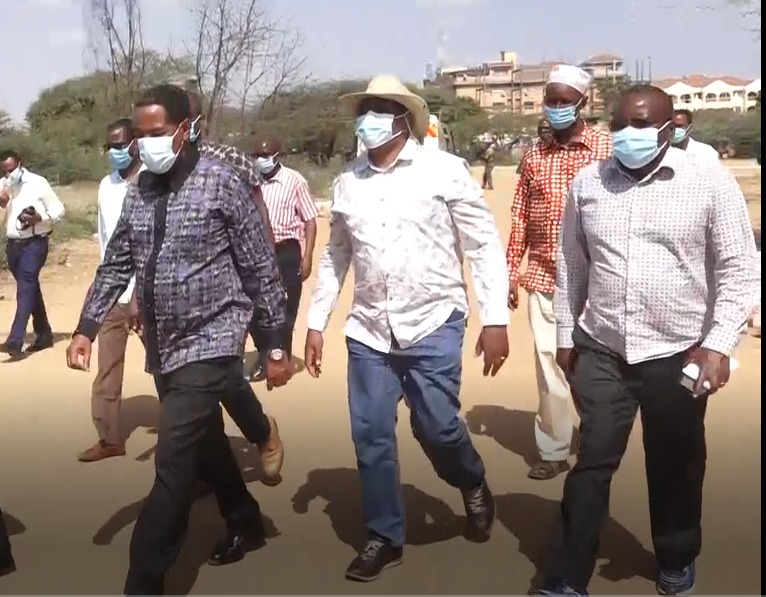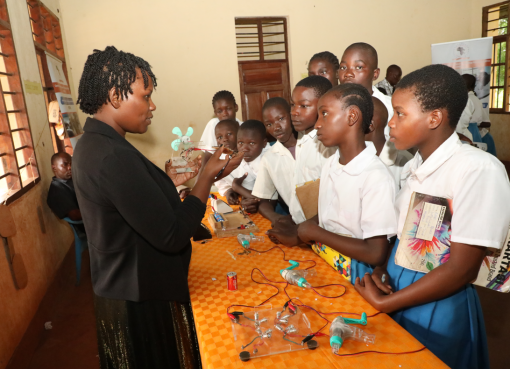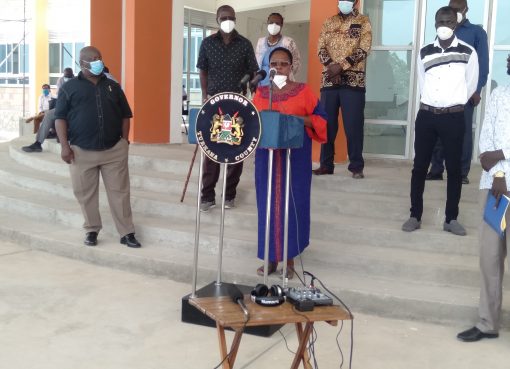Schools in North Eastern region are grappling with the acute shortage of teachers among learning institutions, two weeks after the schools re-opened following directive by President Uhuru Kenyatta.
Principal secretaries Ali Noor (Cooperative), Micah Bowen (ASAL) and Kirimi Kaberia (Mining) who toured the region in ‘operation back to school’ assessment tour were met by grim realities of how schools especially those in the rural areas are struggling to retain the pupils and students in schools.
According to latest statistics from the ministry of education, schools with only one teacher employed by TSC in Mandera, Wajir and Garissa are 116, 96 and 118 respectively.
Overall, Mandera has a shortage of 1,849 in primary and secondary 517. In neighboring Wajir, the shortage in primary schools stands at 1,414 and secondary 51 while in Garissa primary the shortage in primary school is 913 and 651 for secondary schools.
Addressing the press after concluded their tour today at Boys Town Secondary school, the PSs said the government is alive to the problem and is doing everything possible to address the teachers’ shortage in the region.
The current problem of teacher shortage started in 2014 when Al-Shabaab killed 28 non-local teachers aboard a Mandera bus headed to Nairobi that led to the mass transfers of non-local teachers by the Teachers Service Commission (TSC).
In 2015, after the Garissa university attack that left 148 people most of them students dead, TSC again carried out a similar transfer.
Early last year, the two attacks on Saretho boarding primary and Kamauthe primary where four teachers were killed worsened the already bad situation as non-local teachers in Fafi sub-county were transferred.
According to Ismail, despite the huge turnouts by students in most schools in the region especially among the candidates (Standard 8 and Form 4), the problem of teacher shortage remains the biggest challenge facing the education sector in the region.
“The government is trying its best to address the problem. Again, as we do this we have to look for a long-term solution. We must get enough local students who finished their secondary school to enroll for the teaching profession,” Ismail said.
“The government is looking into enhancing security which is a continuous process and other temporary measures that can be put in place including recruiting temporary teachers under the BOG arrangement,” he added.
On his part, Ismail said that challenges facing rural schools is that of parents having moved with their livestock in search of pasture and water meaning they have to place their children to their nearest schools.
Bowen on his part urged the ministry of education officials together with the national government administrative officials to continue tracing pupils and students who moved out with their parents to ensure that they placed to the nearest schools.
A senior education who requested anonymity said the shortage solution to the teacher shortage is for the TSC to empower the school’s management boards to recruit teachers on contract, but the TSC should send the money projected to for recruitment to the schools to help pay the contracted teachers.
“Most of the parents in schools faced with serious shortage are from poor background. Burdening them with extra cost of paying the contracted BOM teachers is unfair,” the official said.
“The funds TSC should have paid the teachers to fill in the teacher shortage should be sent to affected schools as grants to allow the boards to recruit teachers,” he added.
By Jacob Songok





